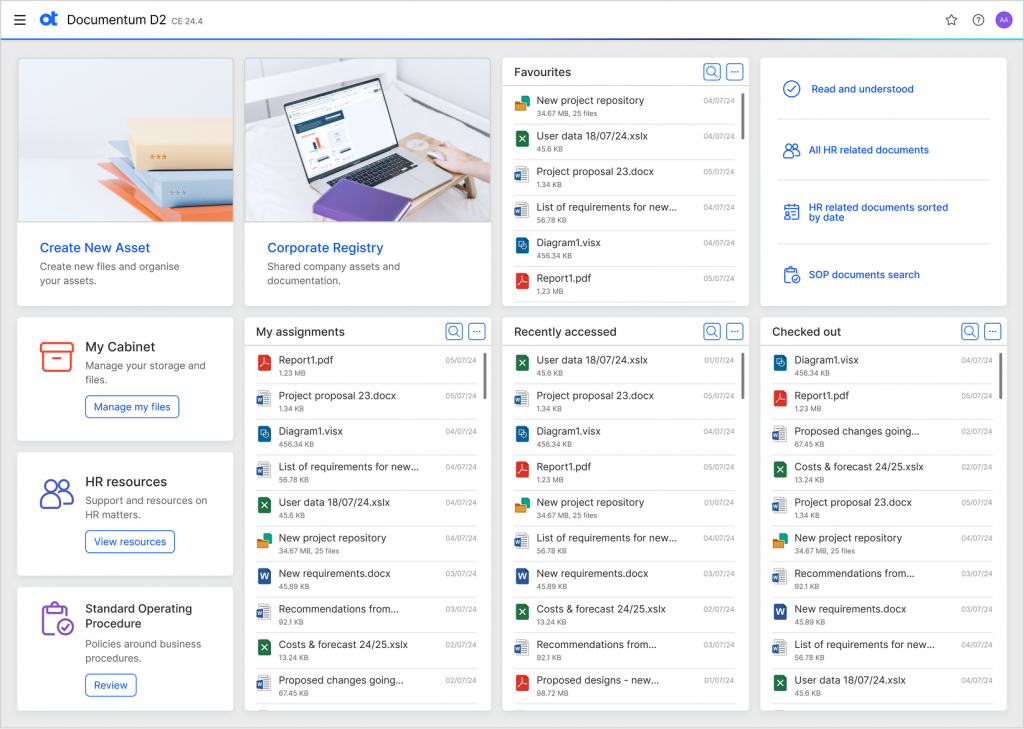
I worked in collaboration with the wider design community and the dedicated DS team at OpenText to help shape the new Design System and create documentation.
OT has a series of User Personas that have been created by the Central UXR team to be used on UX projects and shared with the greater design community.
I took selection of personas created for the biggest selling applications, to understand what are the key objectives for the roles within those systems and what types of notifications / will help supplement their daily work.
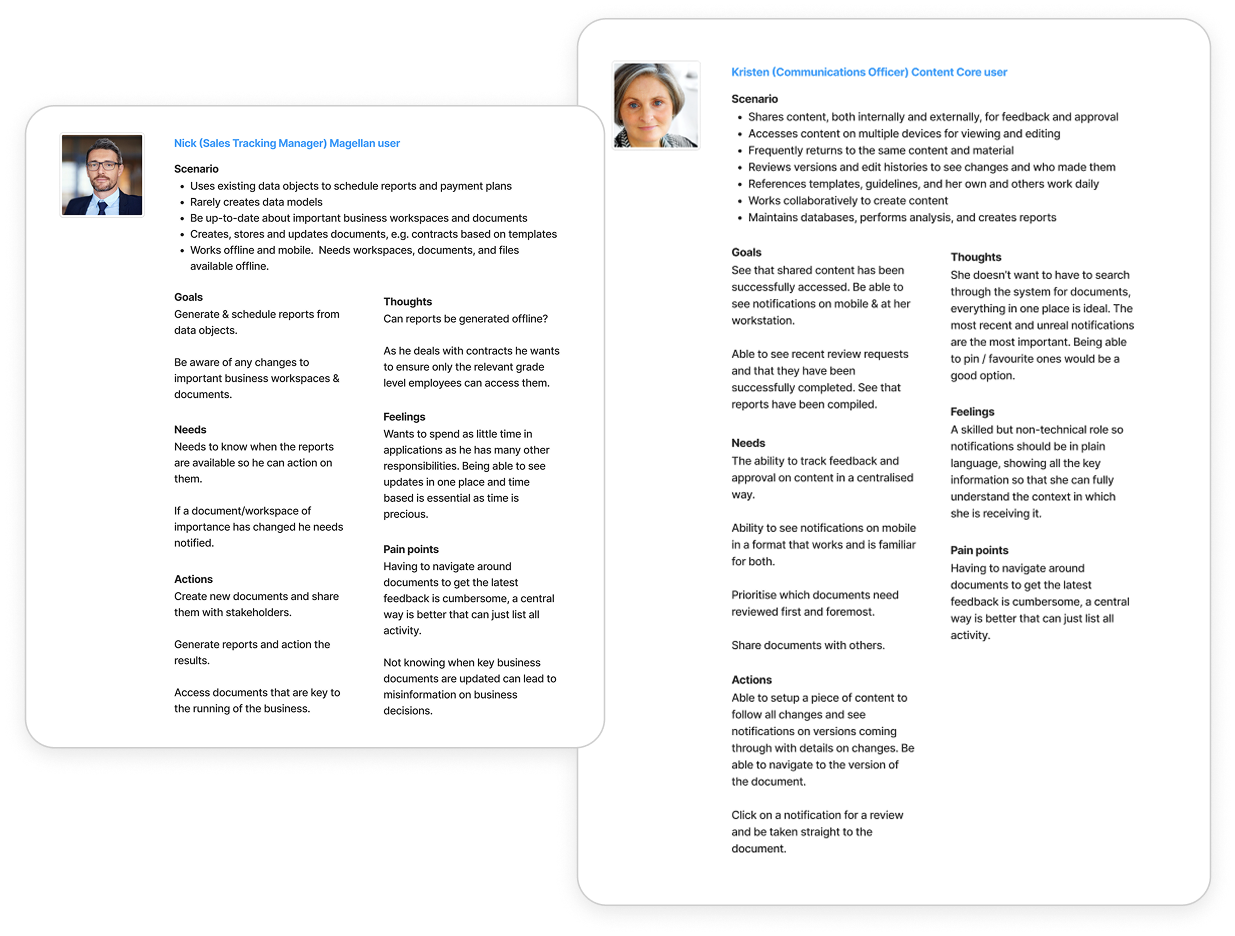
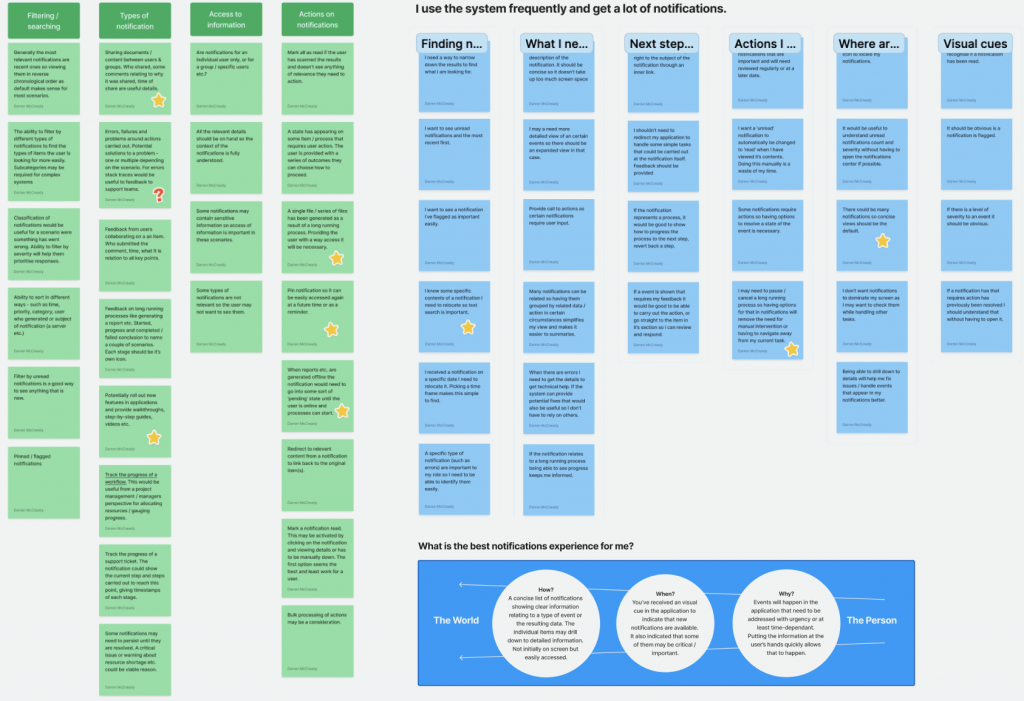
Getting a handle on how other design systems / applications are tackling the problem. I use this to understand strengths, weaknesses, trends, common patterns and opportunities to develop a more well-rounded solution.
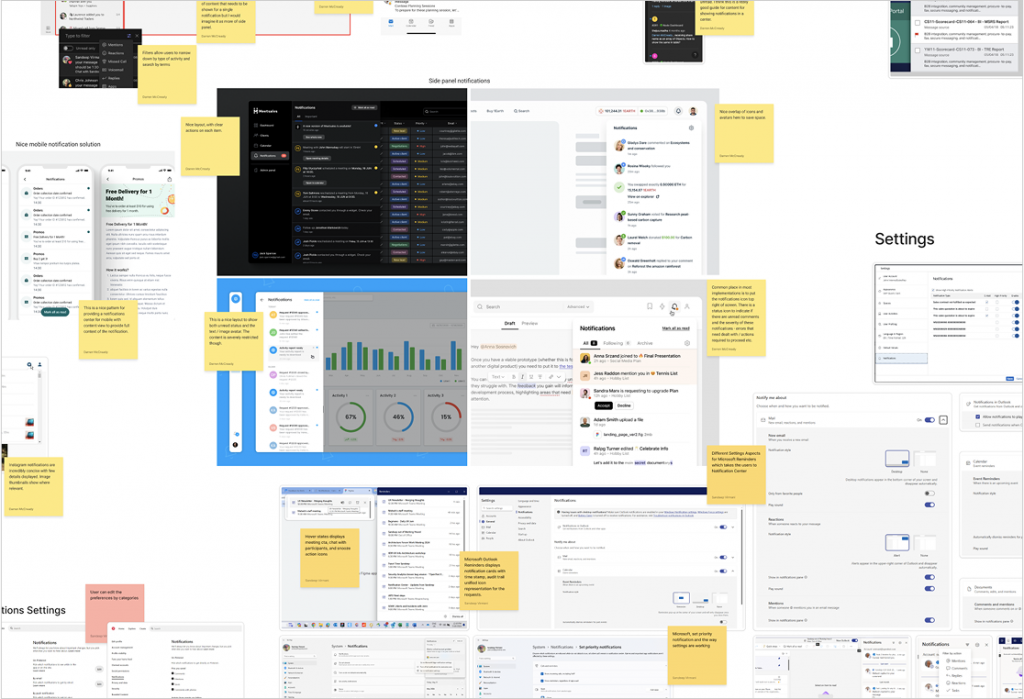
With understanding of the users perspectives, what the product demands are, and what competitors are doing I had an idea of what needed to be designed out. I put a plan of action together and worked with the design community leaders at OT to finalise a clear plan of action.
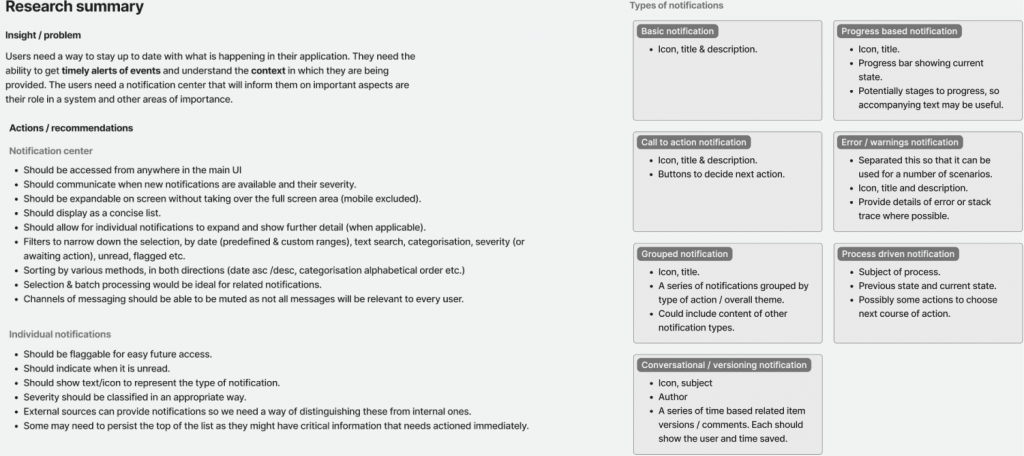
Understanding how the user will try to navigate the feature is essential to building something that is cohesive and matches the users expectations. We can also understand any potential issues in the proposed solution at an early stage and make tweaks.
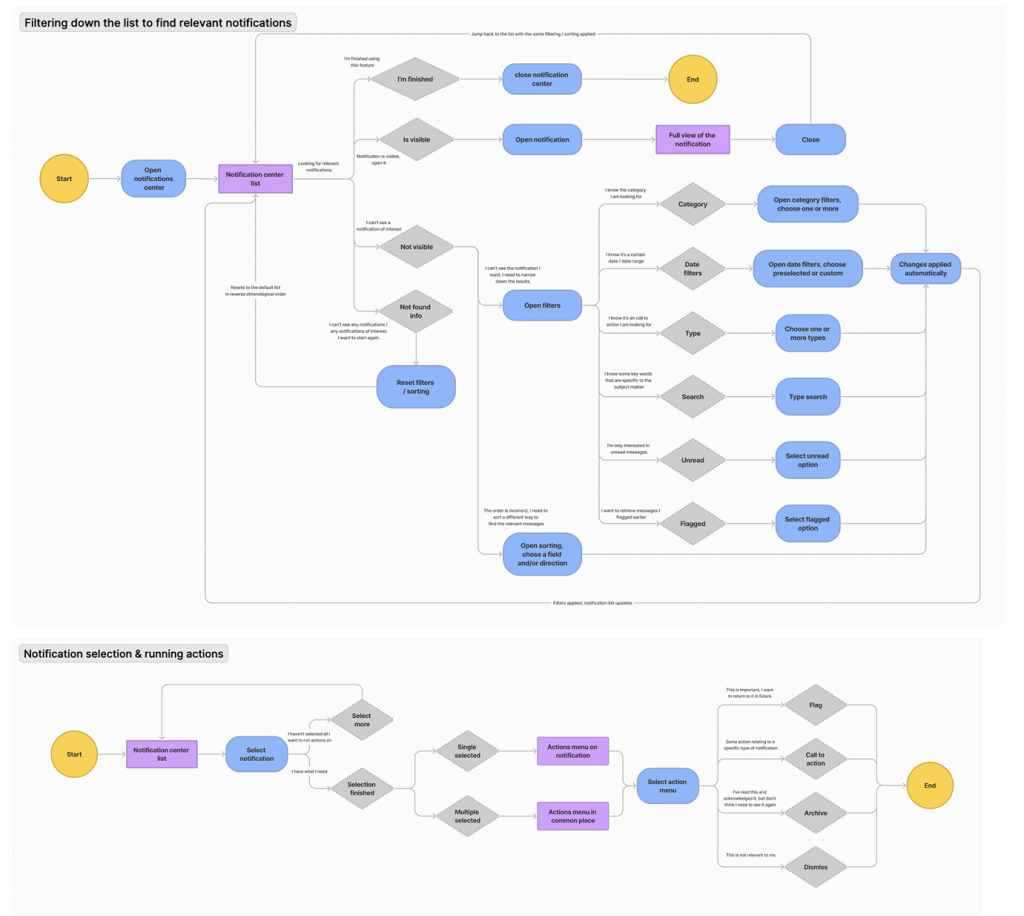
I prefer to work with digital wireframes as a starting point for formulating layouts and suitable content for a screen. I will show these at a very early stage to get stakeholder feedback. Documentation inline can help demonstrate the solution as presenting to all parties is not always possible.
Ideally I like to work with a wireframe component library that matches the design system so the transfer from wireframes to finished designs can be more fluid. I have built several of these kits in my last few roles.
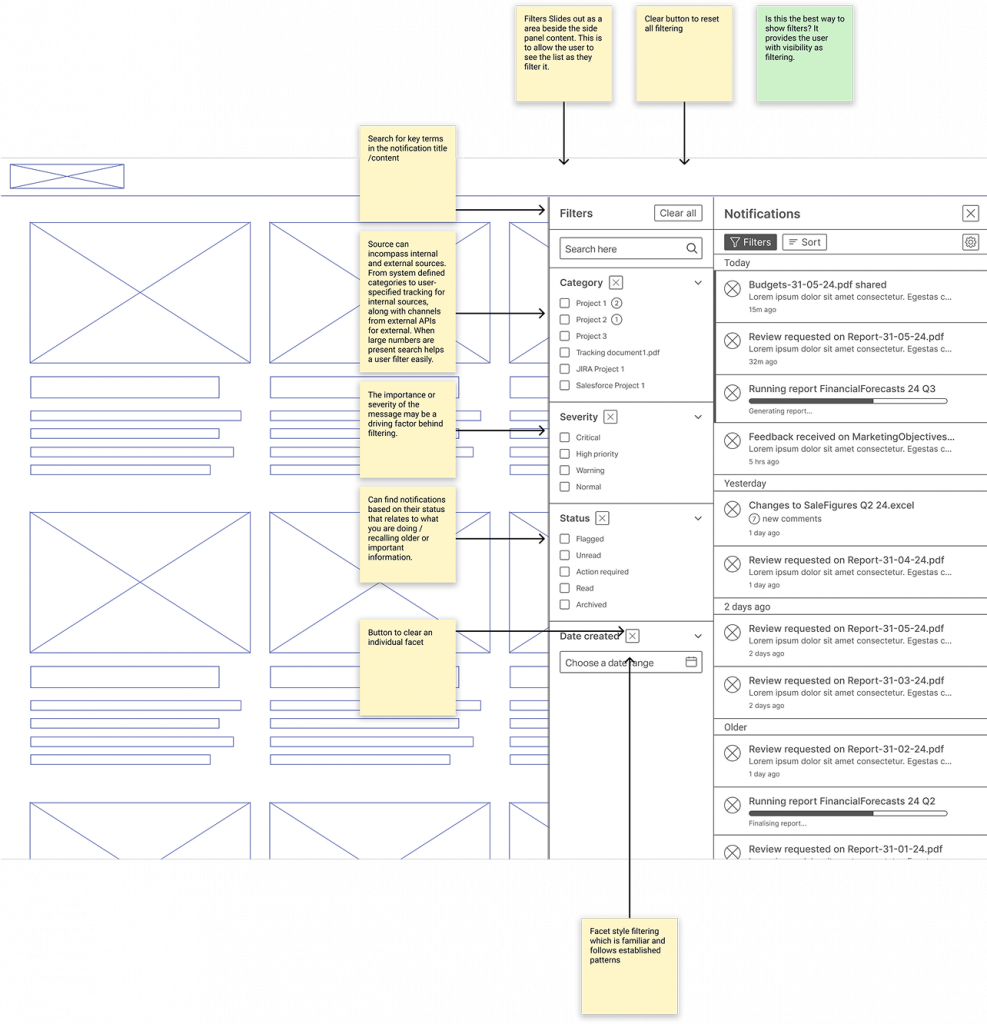
With many rounds of reviews, deliberations and coming to a consensus as group we are able to find a suitable solution. I could then build out the documentation for the notification centre and provide clear guidance to product teams for how to build this pattern out for their product.
Note: the end result of my involvement in this work was to create guidelines and wireframes – not the finished high fidelity designs.
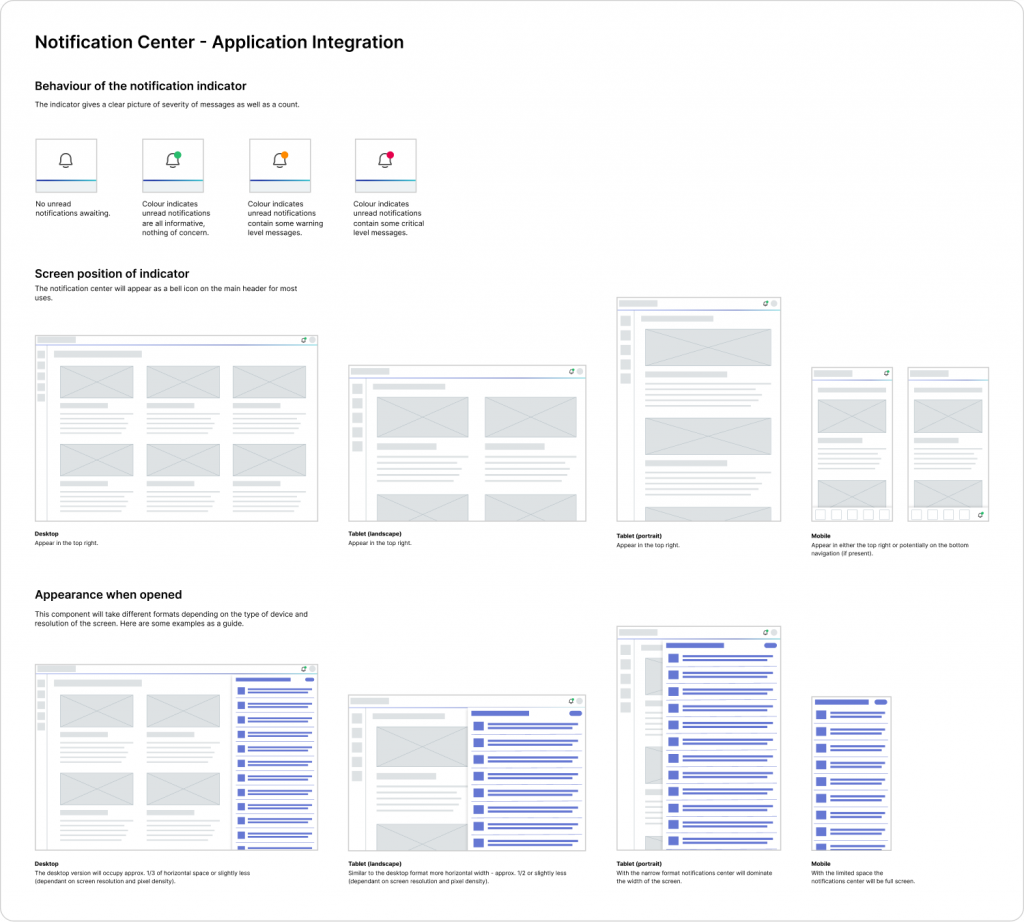
The design community at OpenText has been involved with building a new design system called JATO that is an initiative brought about to unify MicroFocus and OpenText products into one look and feel. This work relates to some design guidelines I wrote for the design system for building effective dashboards in OpenText products. The initial focus of work was to provide flexible guidelines around tiles.
The examples in the following pages are refreshes of some of the most successful products in the OT & MF family, with the view to validating the effectiveness of the dashboard guidelines and design principles in practice. At the time of this work being carried out, JATO DS was still in it’s infancy so these designs were conceptual and for validation purposes.
TGO has one of the more analytics-focused dashboards in the OT family of products, making it a good example for validating the design elements. This application deals with Risk & Compliance monitoring, so there are some specific design challenges.
One objective that came out of these design experiments was that the elevations needed tweaking so there could be more hierarchy to information.
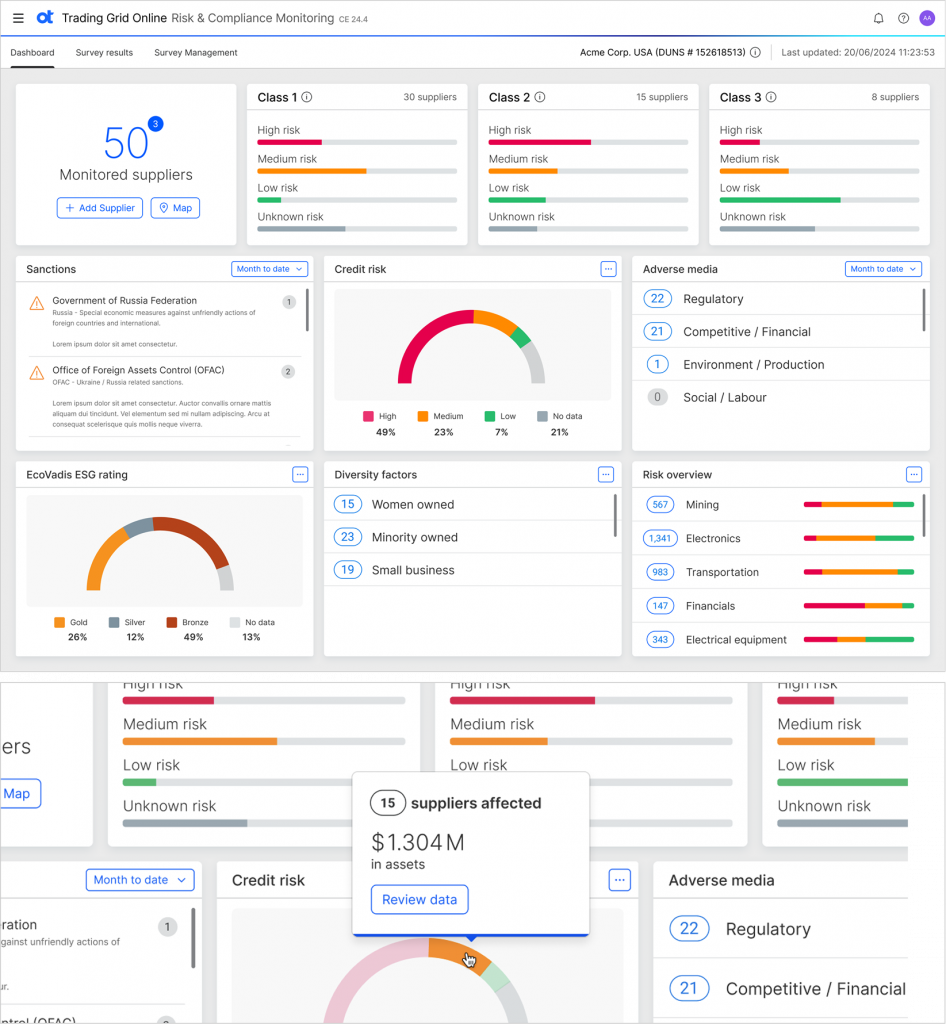
Value edge is a heritage Micro Focus product. As JATO has been brought about to unify all products it is important to validate products from both design systems.
Below is a screenshot of the original application which is designed differently. In the original design the secondary content took too much attention like the introduction so the tiles have been reorganised to place more importance on the day-to-day work.
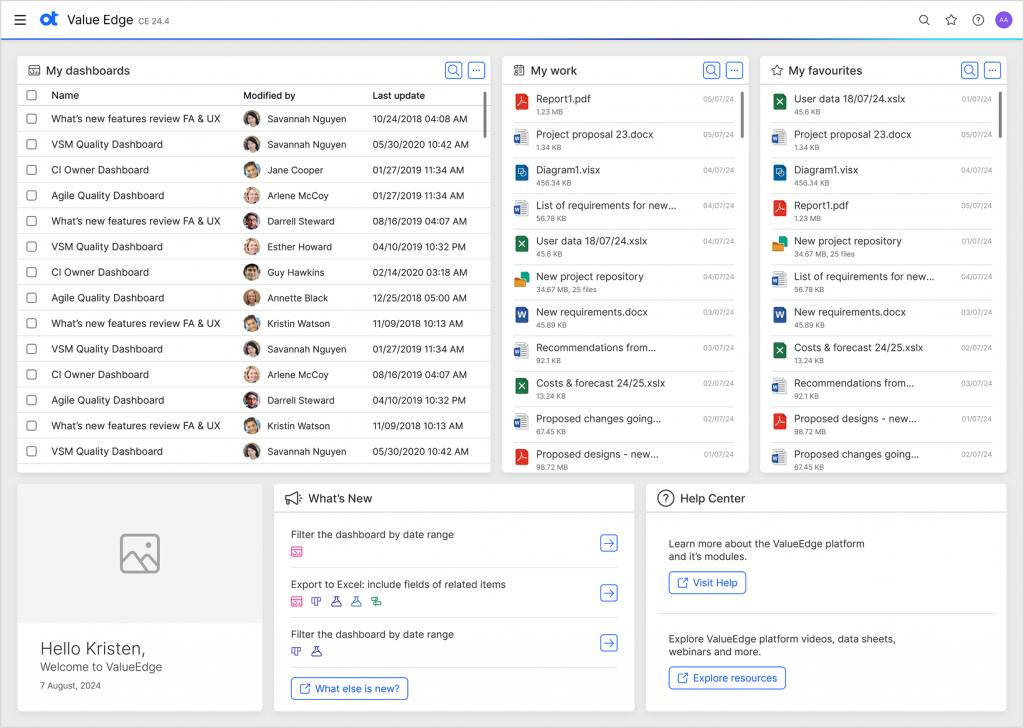
Documentum D2 is one of the biggest selling products in the OT family. The dashboard is mainly operation-focused, with many links to content and views of recent documents / documents being worked on by a user. It is important that all the relevant information is at their finger tips.
See the previous OT DS version below. The colour schemes are overly dominant and nothing stands out so the scheme has been muted to give a more lighter, more modern look and feel.
